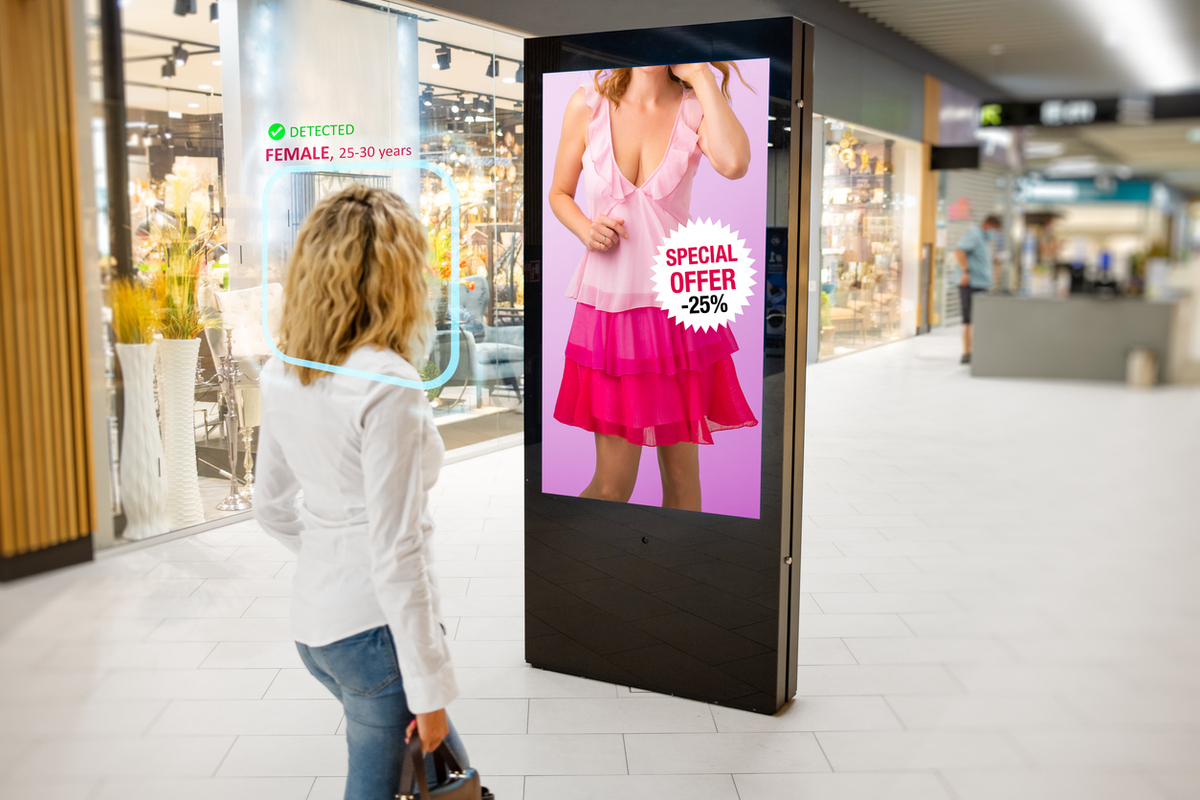Harnessing AI-powered emotion tracking
Jeremy Swinfen Green explores a new frontier for retail profitability

In the highly competitive retail landscape, understanding consumers and consumer emotions has always been the key to success. A happy customer is a loyal customer, and a loyal customer is the backbone of retail profitability.
But tracking customer emotions is difficult, whether the customer is online or in a bricks-and-mortar store. While most people can judge the emotions of others to a degree, they tend to be less accurate with emotions such as anger and disgust, while the accuracy of their judgements varies widely, depending on factors such as age, education and fitness.
In addition, culture and personality can also have an effect. And there is a circular process involving “emotional contagion” where people absorb the emotions of others which in turn affects their ability to judge emotions.
It’s complicated. So how can retailers accurately gauge customer emotions, especially given the myriad of stimuli they receive from multiple products, other customers, shop staff and the physical environment? The answer lies in the rapidly advancing potential of AI-powered emotion tracking techniques.
Emotion in retail
“Sell the sizzle, not the sausage”. Most marketers understand the importance of emotion in making sales. Product benefits (appetising sounds and smells) are generally far more significant at driving conversions than product features (pork content and calories). Sure, product price and characteristics are important at narrowing down choice. But the final decision to buy is normally the result of an emotional trigger.
AI emotion tracking involves the use of advanced algorithms to analyse various behavioural cues. Cameras can capture facial expressions, pupil dilation and physical movements; microphones can pick up on verbal cues; Wi-Fi and Bluetooth tracking technologies can collect data on customers’ movement patterns and dwell times within the store. And, when formal experiments are undertaken, biometric data such as heart rate and skin conductivity can be used to infer the emotional states of individuals.
These techniques can provide a vast amount of data that can be hard for humans to unravel. And that’s where AI comes in. Using advanced algorithms and machine learning, AI-powered systems can use computer vision, natural language processing and big data analysis to go beyond surface-level interactions and delve into the subconscious feelings driving consumer behaviour. This enables them to predict behaviour so that interactions and offerings can be tailored accordingly.
Planning for profit
A powerful way of using AI emotion tracking is to understand purchase intent. By analysing facial expressions and body language, emotion tracking can help retailers gauge shoppers’ levels of excitement, interest or hesitation when interacting with products or displays. Product preferences can also be identified. By correlating certain emotions with product categories or features, retailers can build insights into customer preferences and adapt their offerings accordingly, whether that’s for eco-friendly products, budget lines, vibrant packaging or leading brands.
Another strategy is to use emotion-tracking to predict future trends and demand. By analysing aggregated emotion data over time, retailers can identify emerging trends and anticipate shifts in consumer preferences. Patterns in shoppers’ emotional responses to new products, promotions or marketing campaigns can provide valuable insights and both retailers and manufacturers can use these to adjust their inventory, marketing strategies and product development plans.
Bolstering sales
Improved in-store experience
One of the primary uses of AI emotion-tracking in retail is improving customer experiences. By monitoring facial expressions and body language in-store, retailers can identify areas of frustration or delight. For instance, if a customer appears confused or hesitant while browsing a product shelf, a nearby staff member equipped with real-time emotion analytics could offer personalised assistance, something that is likely to enhance loyalty as well as driving sales.
With online sales there is also an opportunity to provide more effective personalisation. Customer emotions can be detected in real-time using an analysis of keystroke behaviour, and retailers can then adapt messaging, product recommendations and even page layouts to match preferences inferred from this behaviour.
For both online and offline retail environments, emotion tracking can help retailers optimise product placement, store layout (for example the width of aisles) and signage. By analysing customer reactions to different merchandising tactics, retailers can identify which arrangements evoke the most positive emotions and drive sales, as well as tracking the “noticeability” of products when displayed in different ways and places.
Empathetic customer service
AI-powered emotion tracking in real time can help store owners to cultivate a deeper sense of empathy and understanding with their customers. Customer inquiries and feedback can be collected and analysed so that any responses can be appropriate to the customer’s state of mind.
For instance, if a customer is showing high levels of frustration over a delayed shipment, the AI-powered systems might detect the emotional intensity of their complaint and escalate the issue to a human representative who would be better able to defuse the situation. It can also be possible to detect customer preferences about when they would like to be helped by a store assistant, and when they prefer to be left alone.
AI-powered emotion tracking can also be integrated with traditional customer feedback systems. Qualitative insights into customer emotions in the store can provide a comprehensive understanding of customer preferences and pain points, informing strategic decisions about service levels.
Preventing losses
Retail profitability isn’t just about making more sales. It is also about reducing losses, from accidents and overstocking, but also from theft. Emotion-tracking in shops is a powerful tool for predicting and defending against shoplifting, political demonstrations and other undesirable conduct by identifying suspicious behaviour.
Shoppers’ facial expressions, body language, clothing and other cues can be used to detect the likelihood of undesirable behaviour. For example, nervousness, avoidance of eye contact or furtive glances towards security cameras or staff members are often signs of an intent to shoplift, and identifying this early allows retailers to monitor the situation and take action before any theft occurs.
Considerations for success
Emotion tracking isn’t a magic bullet. For a start, there is rarely a guarantee that, even when using AI, the emotions of shoppers are detected accurately. In addition, a shopper’s emotions can change rapidly, influenced by the environment, including the people nearby. There is little certainty in emotion tracking, although undertaken in the right way the technique has the potential to deliver improved profits.
Mistakes, though, can be damaging. A false accusation of shoplifting, or even a premature accusation of the intent to shoplift, could damage a brand and even result in legal action. It’s therefore essential for retailers to balance the use of emotion tracking technology with ethical considerations and privacy safeguards.
And because biometric data is often being used, the legal and moral guardrails around privacy are particularly tight. Clear communication with customers about the use of such technology, obtaining consent where necessary and ensuring compliance with data protection regulations are crucial for maintaining trust and transparency.
As technology continues to evolve, AI-powered emotion tracking will become an indispensable tool for retailers who wish to thrive in an increasingly competitive market. By reacting to shoppers’ emotions in real time, retailers can forge deep connections with their customers, driving sales and building brand loyalty.

Jeremy Swinfen-Green
Most Viewed
Winston House, 3rd Floor, Units 306-309, 2-4 Dollis Park, London, N3 1HF
23-29 Hendon Lane, London, N3 1RT
020 8349 4363
© 2025, Lyonsdown Limited. Business Reporter® is a registered trademark of Lyonsdown Ltd. VAT registration number: 830519543





